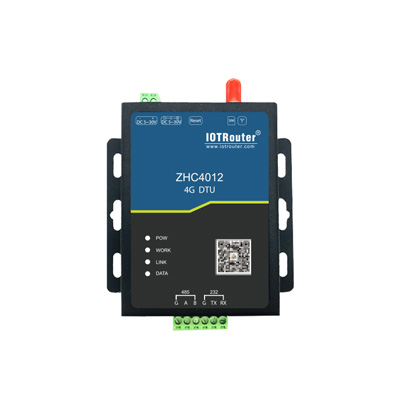| Product Image | Interface Type | Tipo de red |
 |
Interface: 1RS485 |
4G full network communication |
 |
Interface: 1RS485, 1RS232 | 4G full network communication |
rs485 module
The rs485 module is used to convert serial port rs485 data into IP data, or convert IP data into serial port RS485 data. Data can be transmitted to the server through the 4G, GPRS, 3G, and NB-ioT networks used. At the same time, short-distance transmission can also be achieved through LoRa. Commonly used in the Internet of Things industry: smart buildings, smart firefighting, shared industries, smart cities, industrial automatic production, environmental monitoring, vehicle-mounted, water conservancy, meteorology, street light monitoring, thermal pipe networks, coal mines, oil fields and other industries.
rs485 basic functions
1. The rs485 module internally encapsulates the PPP dial-up protocol and TCP/IP protocol stack and has an embedded operating system. From a hardware perspective, it can be regarded as a combination of an embedded PC and a wireless 4G MODEM; it has 4G dial-up Internet access and TCP/IP The function of IP data communication.
2. The rs485 module provides a serial communication interface, including RS232, RS485, RS422, etc., which are all commonly used serial communication methods, and most of the 4G DTU designs design the serial port data into a “transparent transmission” mode, that is to say 4G DTU can convert the original data on the serial port into TCP/IP data packets for transmission without changing the original data communication content. Therefore, 4G DTU can connect to various user equipment that uses serial communication without requiring modifications to the user equipment. It greatly facilitates the transmission process and does not require complicated protocol conversion.
3. One of the advantages of the rs485 module device is that it supports 4G terminal equipment to be always online. Therefore, typical 4G DTU supports always online function in design, which requires the DTU to include automatic dialing after power on and poor heartbeat packets to maintain permanent online ( When there is no data communication for a long time, the mobile gateway will disconnect the DTU and the center. The heartbeat packet is a small data packet sent by the DTU and the data center before the connection is disconnected to keep the connection from being disconnected), product software and The hardware is also equipped with watchdog technology, two-layer protection equipment, automatic reconnection, automatic redialing and other features when the equipment is disconnected.
4. As a communication device, the rs485 module has a wide range of uses. In different uses, the IP address and port number of the data center, the baud rate of the serial port, etc. are different. Therefore, 4G DTU should support parameter configuration, and save the configured parameters in an internal permanent storage device (usually FLASH or EEPROM, etc.). Once powered on, it will automatically operate according to the set parameters.
Other functions of rs485 module
◆China Mobile, China Unicom and China Telecom 4G high-speed data transparent transmission
◆Serial heartbeat packet
◆TCP_Client, HTTP_ClientModbus RTU/TCP
◆Master, slave mode, master mode
◆Support RS485 cascading of multiple devices
◆Cloud forwarding and cloud networking settings APN
◆Network registration package, heartbeat package, hardware watchdog
◆SIM card number query local upgrade, remote upgrade host computer quick configuration virtual serial port remote operation
rs485 module application
Smart charging piles, the use of 4G full network DTU in smart charging piles can send the data from the detection of charging piles to servers and cloud channels in real time.
4G full network DTU can not only be used in the above examples, but also can be used in flash flood/flood discharge monitoring, construction site dust monitoring system, automatic payment inquiry terminal, bus wireless network, industrial control field, traffic management, environmental monitoring, climate, Water conservancy, coal mines, etc.